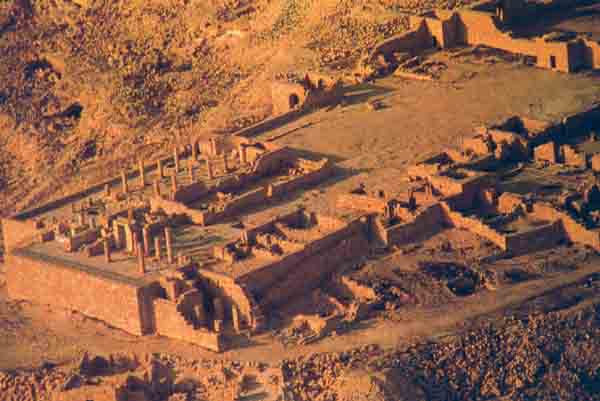Image Details

Richard Nowitz
The huge rectangular podium of Oboda once supported a white limestone Nabatean temple built during the reign of King Obodas II (30–9 B.C.), who was supposedly buried there and for whom the site was named. Little remains of the temple except the flat rock floor and three gates; most of the stones were reused in the construction of the two Byzantine churches now in ruins upon the podium. Among the Nabatean remains visible in this photo are one of the three original entrances to the temple, at the foreground corner; the columns of the temple gateway, standing in the portico on the far left end of the podium; and the site of the temple’s inner shrine, possibly marked by the small rectangular pool in the floor, a short distance beyond the gateway.
The two parallel rows of columns along the far wall are part of a fourth-century Byzantine church. The rest of the visible structures in the acropolis also date to the Byzantine period.
